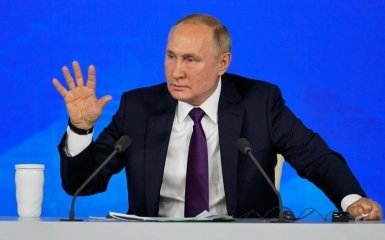On November 28, the illegitimate president of Russia, Vladimir Putin, finally commented on the large-scale collapse of the ruble, which has already reached 113.0947 rubles per euro and 108.0104 rubles per dollar.
Points of attention
- Putin's attempt to reassure the Russian population about the rapid fall of the ruble has been deemed false by experts, who predict an even sharper decline due to new US sanctions.
- The collapse of the ruble is increasing pressure on the Russian economy, leading to potential inflation and the risk of contracts being broken by Russia's partners.
- The Central Bank is preparing to raise interest rates to tackle economic difficulties caused by the ruble's fall, with predictions of rates potentially reaching record highs to combat inflation.
- The recent fall of the ruble has magnified concerns about foreign currency inflows, prompting the Central Bank to consider measures to stabilize the currency amidst worsening economic conditions.
- The weakening ruble, which has lost significant value against major currencies, is posing challenges to exporters and regulators while necessitating interventions to mitigate the currency's collapse.
Putin falsely commented on the rapid fall of the ruble
In general, in my opinion, the situation is under control — Putin commented for the first time on the sharp drop in the ruble exchange rate.
The Russian dictator believes that there is absolutely no reason to panic.
Yes, both in our country and in neighboring countries, the processes are not easy, but under their control, everything is going according to plan, he said.
Meanwhile, the official rate of the Central Bank on November 28 is 108 rubles to the dollar, the last time this was in March 2022, after the start of the invasion of Ukraine.
Experts predict an even sharper fall of the ruble
On Solovyov Live, the dean of the Finance University under the government stated that the dollar exchange rate may rise to 150-180 rubles.
These things are sensitive for our people, and here it is necessary to understand the measures taken by the Central Bank, — said associate professor and doctor of political sciences Pavlo Seleznyov.
Journalist Ilya Shepelin noted that "the topic of the hard landing of the ruble is almost completely ignored by Russian TV." Volodymyr Solovyov himself never once mentioned the drop in the Russian currency on the morning broadcast today.
From November 28 until the end of 2024, the Central Bank of the Russian Federation will stop buying foreign currency on the domestic currency market.
The Russian ruble has fallen more than 24% since early August, when its slide began, and could continue to weaken.
New US sanctions against Russian banks led to a further fall in the ruble, putting at risk the last channels of direct foreign currency inflows into the country.
Russia's partners are breaking contracts due to the collapse of the ruble
The ruble's recent fall is putting more pressure on the Bank of Russia, forcing it to raise its key rate — perhaps the most since the start of the war in Ukraine.
According to the Central Bank, since November 21, when the US imposed sanctions on about 50 Russian banks, the currency has weakened by almost 8% against the dollar and the yuan. This is likely to increase inflation, which the Bank of Russia is trying to contain by raising interest rates to record highs.
The central bank said it was prepared to continue raising the cost of borrowing, currently at 21%, to the level needed to bring inflation back to its 4% target next year. According to Bloomberg estimates, this could mean that the next step would be to raise the rate to 25%.
The demand for foreign currency in the domestic market has increased sharply against the background of fears that the new restrictions will significantly limit the inflow of foreign currency.
Government officials are trying their best to play down the impact of the ruble's weakening, emphasizing, in particular, that it is a boon for exporters. But with inflation more than double the central bank's target, a currency collapse could force regulators to act, despite already painful lending conditions.
The ruble has lost 19% against the US dollar since the start of the year, making it one of the worst emerging market currencies. The Bank of Russia has been using interbank transactions to calculate the exchange rate since June, when the US imposed sanctions on the Moscow Stock Exchange, which immediately halted trading in the dollar and euro.




